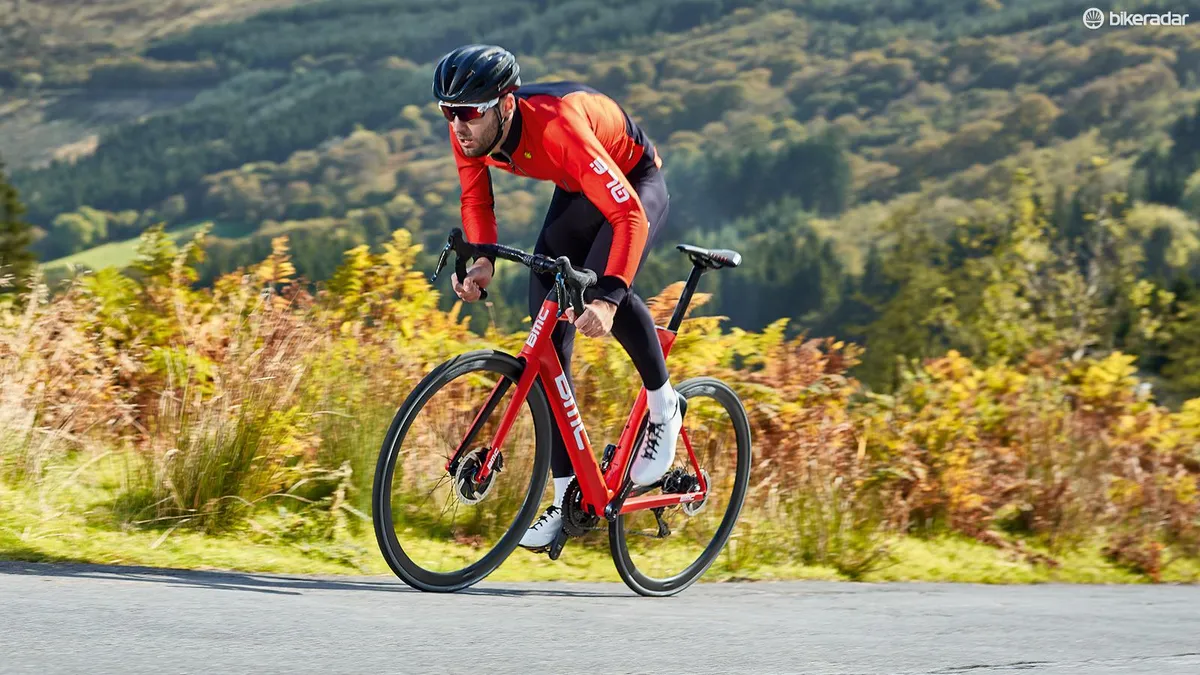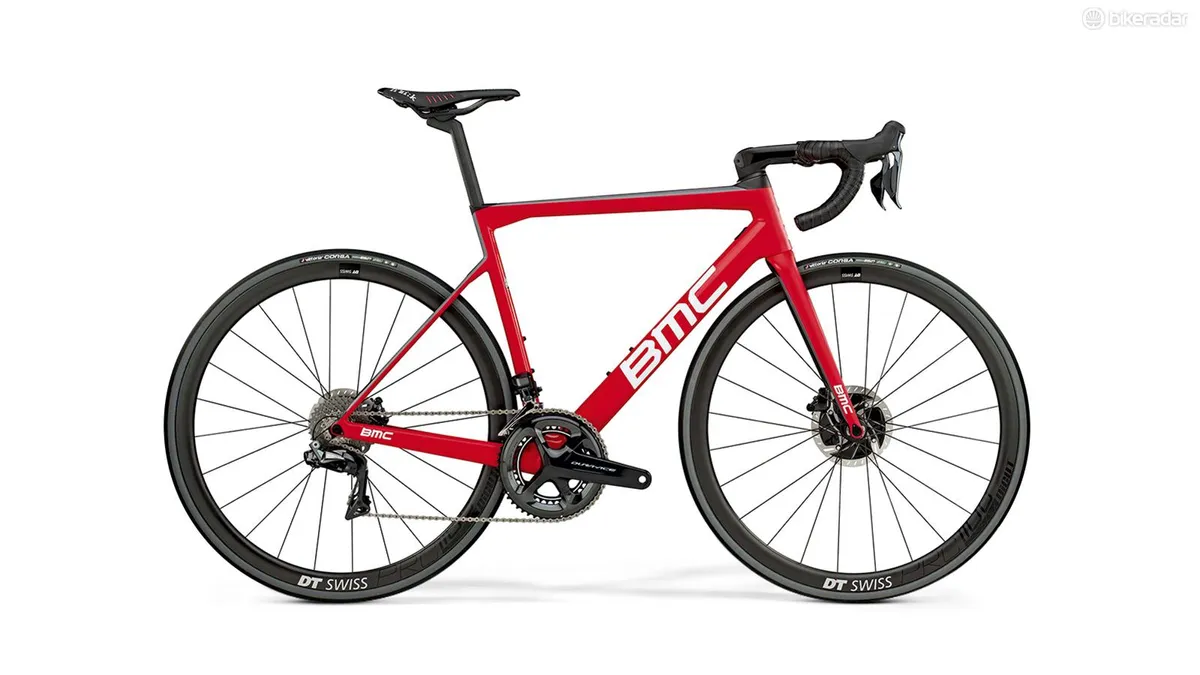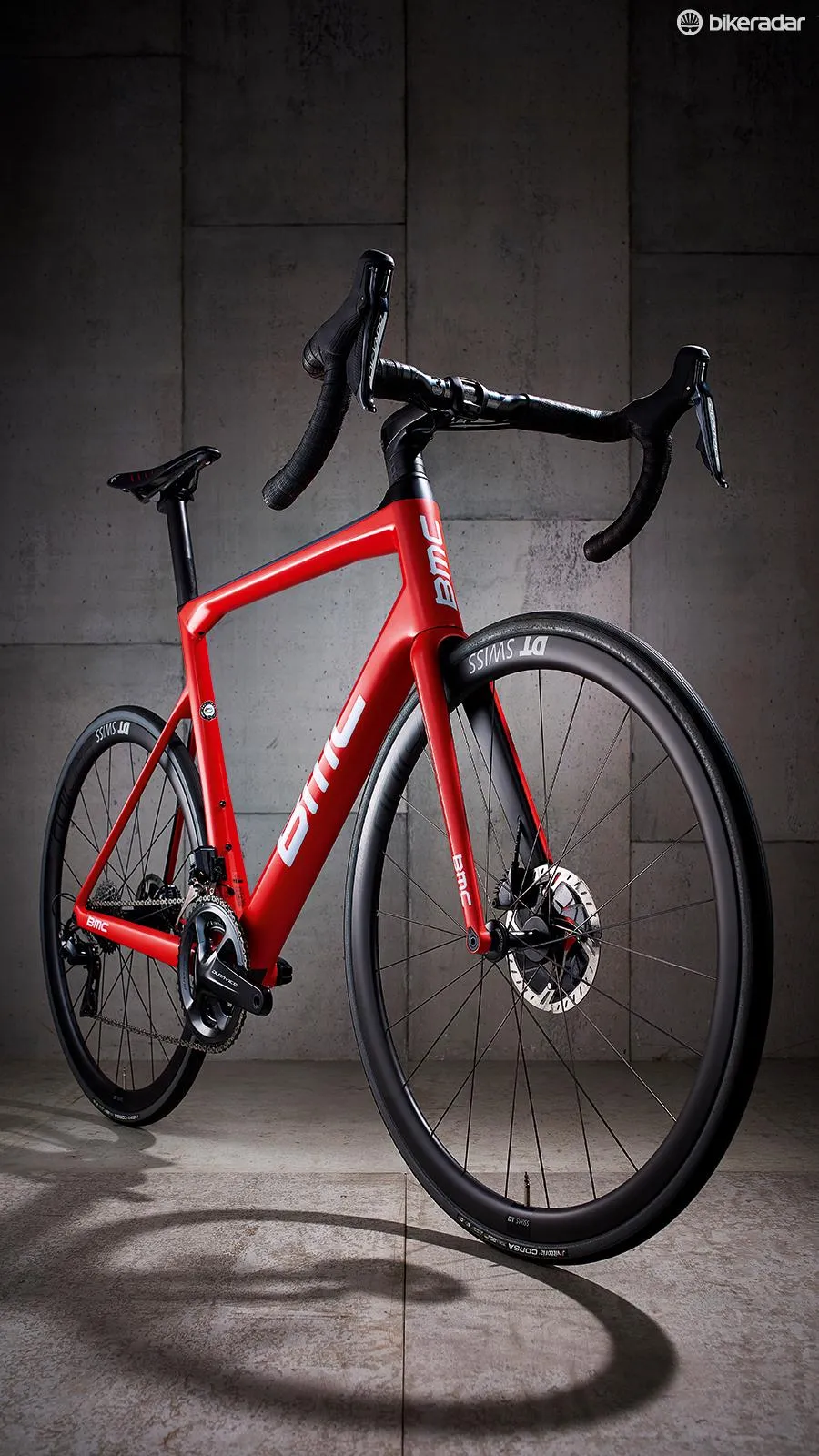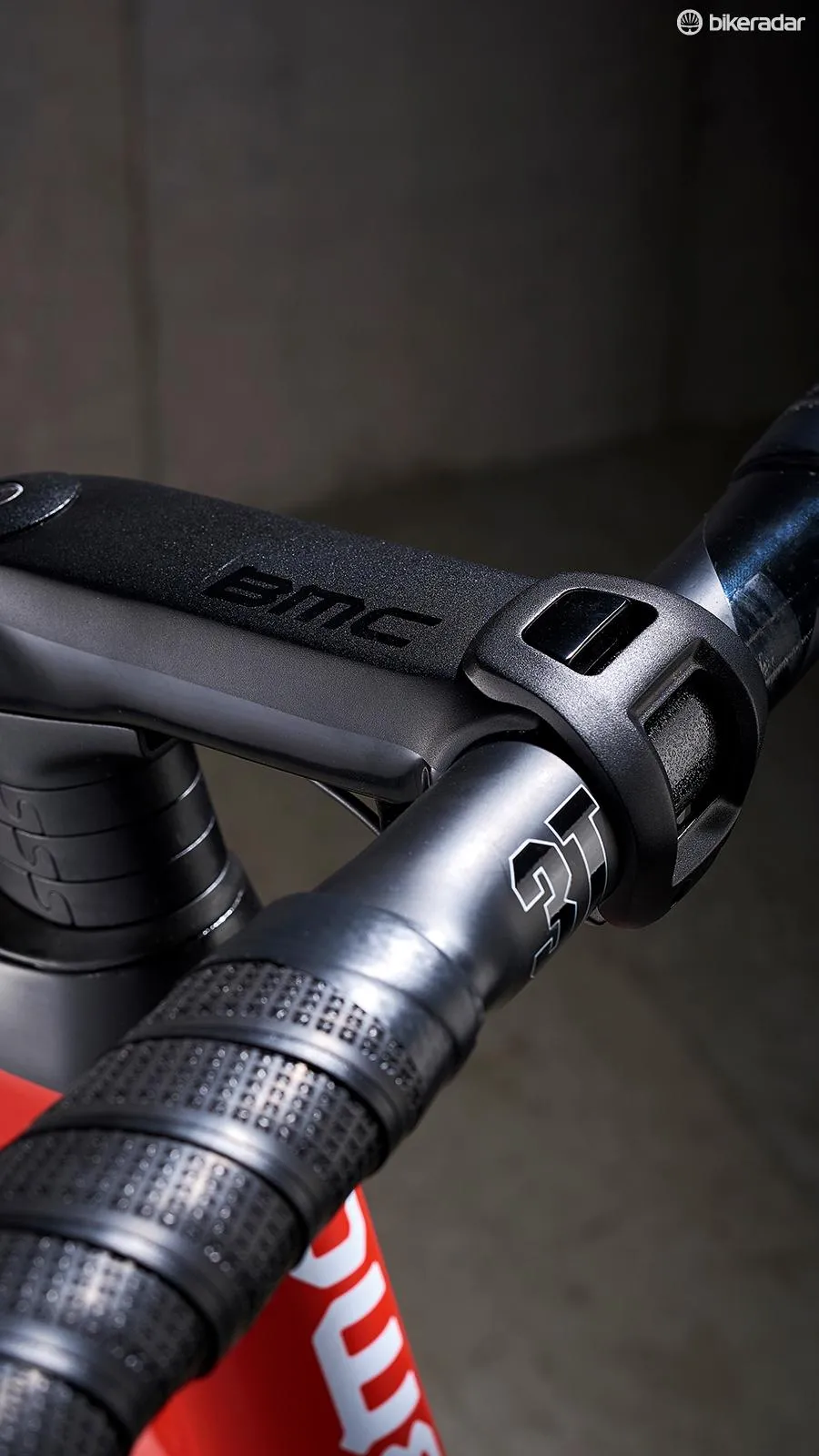The 2018 model Teammachine is the first to go disc in the bike’s history, although a rim version has been retained in the new design range. There are plenty of the previous generations’ styling cues, the angular tube shapes and dropped seatstays, but it appears tougher and more aggressive than version two’s slender looks.
Asymmetry is the name of the game. The non-driveside chainstay is almost square in profile compared to the driveside. The shape and profile of each fork leg has been altered to compensate for wind forces and the thru-axle. So, whereas a standard disc fork adds 60g-plus over a conventional rim-brake fork, the SLR’s only adds 18g.
On the road, the SLR01 feels familiar; it’s imprinted with the same sharp stiffness that impressed us with the previous version. The stiffness through the drivetrain that makes the SLR accelerate with stunning rapidity is perfectly countered by a smoothness that makes it a joy to ride.
Over rolling terrain the SLR01 is rapid, and I mean aero-road-bike quick. Comparing times between this and the Trek Madone over the same test section, the BMC was within a couple seconds of that bike, which is built to cheat the wind.
The combination of the chassis and light wheels from DT Swiss makes short work of hills, and the gear combination of 52/36 chainrings and a wide 11-30 cassette is easily enough to get you up any gradient.

Even though BMC has extended the back end to accommodate discs, by a scant 8mm, it’s still a really nimble bike. Over my weeks of testing, I’ve had to contend with high winds and heavy rain, and the combination of the latest Dura-Ace discs and Vittoria’s excellent 25mm Corsa tyres has proven every inch the match for adverse conditions.
The new Dura-Ace Di2 is a marvel. BMC has integrated the new control box into the down tube, which means with a quick button press you can switch between standard, semi-synchro, and full-synchro transmission duties.
On full synchro, the system shifts the front mech automatically, so if you’re ratcheting through the block as the climb gets stiffer, the system will switch the front mech to drop down into the smaller ring, or vice versa when it comes to descents. Semi-auto sync, which I appreciated a lot, shifts the rear mech in either direction when you shift the front, giving a smoother transition between gears, a more even pedal progression and more consistent cadence.
New Di2 has another trick up its sleeve too. Shimano has the E-Tube project app, and once connected you can alter the shift speed settings, allocate buttons to duties, including the new top of the hood-mounted button.
To get the phone/tablet app features you need the Shimano BW-WU111 or SM-EWW01 wireless antennas, which not only operate gear controls, but, if connected wirelessly, operate lights or switch between Garmin screens.
The antennas cost £74.99, and when you’re looking at buying a bike at this price I’d like to see that included, especially as wireless connectivity comes as standard with SRAM’s eTap.
If the SLR01 wasn’t so expensive it would be at the top of my shopping list, for now it just tops my wish list.




